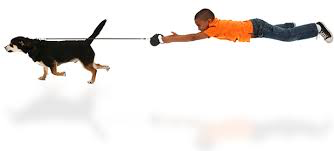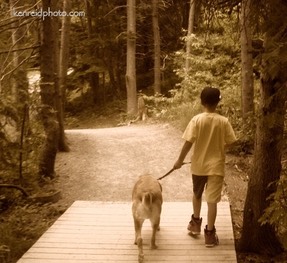
In the dog training world we hear from people constantly who say;
“I have tried everything and nothing has worked”
I discussed this idea in other articles on this site. “Everything” is an awful lot. “ Nothing” means there has been absolutely no progress with your dog. Dogs are constantly learning. They are continuously developing through their interactions with the world. If they are learning nothing through their interactions with you, perhaps you need to do some reflection on the quality of what you are offering to your dog.
It has been my experience owners try to address their issues using a couple of interventions. When progress does not occur or is slow coming, dog owners attempt the same interventions over and over again expecting different results. Does everybody remember the definition of insanity?
Even sadder is when the interventions are done ineffectively.
Owners toss around notions like,
“I tried positive reinforcement but it was not effective for my dog.”
without really having an understanding of what those concepts mean nor how to engage in them effectively.
Operant conditioning is how all beings learn. When combined with classical conditioning, you have a blueprint in which every being, animal or human, on the face of this earth navigate the their lives. In turn, you also have solid means of shaping any behavior you wish. Saying it does not work is like saying:
“I tried breathing but it was not for me” or
“Eating to stay alive…I do not need that”.
When engaging in proper behavior modification, you develop a set of skills. The skills often take time and practice to become proficient. It is not that positve reinforcement does not work, usually if there is a lack of progress, positive reinforcement is being done ineffectively.
Giving up is easy and truthfully, I do not blame owners for that either. While reinforcement and punishment may seem like basic ideas, the implementation of them can be confusing. The confusion is often what makes owners become frustrated and try other, often less effective and more troubling means to alter their dogs behavior.
Operant conditioning is governed by the four quadrants. I talked about the Four Quadrants in another blog.
First let’s clear up the difference between positive and negative reinforcement.
People understand the concept of positive reinforcement. It is straight forward and familiar. Positive reinforcement broken down to its most base form is giving the dog something it likes in response to a desired behavior. Keep in mind that “something” can be food, treats, toys, praise (both verbal and non verbal), any and all combined. Anything your dog likes can be used as a positive reinforcer. What makes positive reinforcement a little more complex to use effectively is when the owner gets into concepts like differential reinforcement, and moving from lure to reward.
People seem to have greater difficulty understanding negative reinforcement. I think people associate the “negative” piece as meaning something morally wrong. In traditional operant conditioning, there is no moral or ethical connotation to positive and negative. Positive means something you add, negative means something you take away. Reinforcement means something you do to encourage behavior to reoccur. So positive reinforcement involves the owner giving the dog something it enjoys to make a behavior more likely to occur. Negative reinforcement involves the owner removing something the dog views as unpleasant to make a behavior more likely to reoccur.
Of course when engaging in operant conditioning, the flip side of reinforcement is punishment. When it comes to the quadrants, you will see, just like positive and negative reinforcement, the ying and the yang is positive and negative punishment.
Using the above rational, punishment is something an owner does to decrease the likelihood of a behavior happening again. Therefore positive punishment involves the owner adding something the dog dislikes in order to discourage a behavior. Negative punishment involves the owner removing something the dog enjoys to make a behavior less likely to occur.
Still confusing?
Let’s make that really simple:
Positive reinforcement: Good things start
Negative reinforcement: Bad things end
Positive punishment: Bad thing starts
Negative punishment: Good things end

Let’s examine the operant conditioning framework using a concrete example of an owner encouraging a loose leash heel.
When participating in any behavior modification it is important for the owner to determine why a dog is engaging in said behavior. An owner must determine whether the behavior is governed by operant conditioning or classical conditioning (again I have discussed classical conditioning in other blogs….go to them for more details).
In this scenario, a dog is pulling simply because it wants to move forward. It wants to get to that tree, that rock, that smell. This is an operant conditoining problem. So how can we use the concepts of reinforcement and punishment to encourage a loose leash and discourage a tight one?
Positive Reinforcement: Give your dog treats, scratches, praise whenever the leash is loose. By giving your dog something it really enjoys when it is doing what you want him to do ie; walking on a loose leash, it encourages your dog to continue walking on a loose leash. Loose leash means your dog continues to receive treats and forward movement continues. Loose leash means your dog is being positively doubly reinforced.
Negative Punishment: Tight leash means the treats dry up. It also means forward momentum stops. Tight leash means the owner is taking away two components of the training process your dog enjoys. The goal of doing so is that the dog will learn if it pulls, these good things go away.
Negative Reinforcement: When a dogs is pulling on the leash, there is positive pressure on the collar. The pressure by its very nature can be uncomfortable for a dog. The amount of discomfort is often times at the discretion of the owner. Negative reinforcement would be reducing the pressure on the collar when the dogs stops pulling. The goal is for the dog to learn loose leash means no discomfort on the neck.
Positive Punishment: This one should be used rarely if at all. Common examples of positive punishment strategies would be leash corrections, yelling and screaming at your dog, and using e-collars. Usually positive punishment strategies come with many drawbacks. While positive punishment practices can work, they are frustrating for a dog. One of the many downfalls of positive punishment is that it often serves to suppress a behavior as opposed to eliminate it.
As is evident, positive reinforcement and negative punishment are naturally less problematic than negative reinforcement and much less so than positive punishment. In order to use operant conditioning properly, an owners response, especially at the beginning of the training process, has to be immediate, consistent and effective. If any of these conditions are lacking, progress tends to lack. This is an owner issue, not a dog problem. If the owner cannot learn to implement operant conditioning effectively, the dog cannot be blamed for not responding in the desired manner.
With the proper use of operant conditioning, the dog owner will begin to develop a problem-solving dog. A dog that will learn how to connect the dots on the quickest and most efficient means to get rewarded while understanding in which to engage to avoid the unpleasant things in life.
How can you ensure you are using operant conditioning properly?
1. Read, read and read some more. Research the topic from quality sources.
2. Watch quality videos on the topic.
3. Practice with your dog.
4. Video your work and evaluate your response with a critical eye.
5. Consult with a quality trainer.
6. Participate in a quality obedience course.
AND (this is the big one),
7. Ensure your dog is having fun. If your dog is not enjoying what it is doing, the quality of the learning experience will be minimal. If your dog is not enjoying, change your stategy and watch the learning happen.
